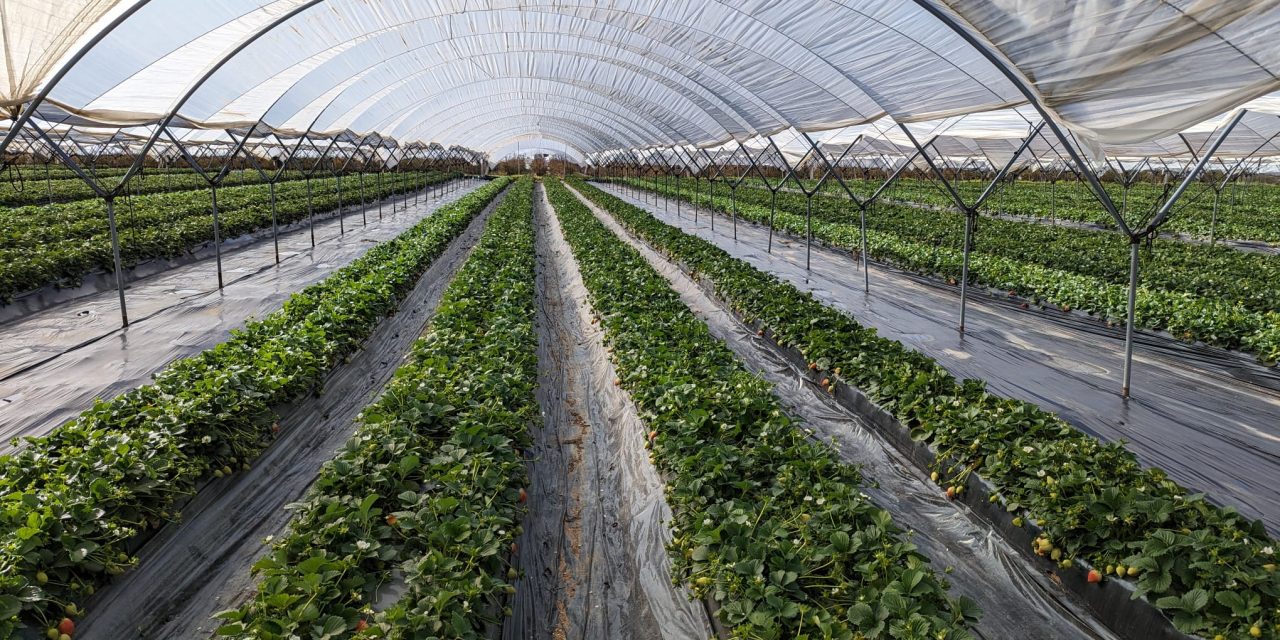![[eBook] Sustainable horticultural twine and baling twine solutions](https://agriplasticscommunity.com/wp-content/uploads/7_550x310_ENG-150x150.png)
![[eBook] Sustainable horticultural twine and baling twine solutions](https://agriplasticscommunity.com/wp-content/uploads/7_550x310_ENG-150x150.png)
![[eBook] Sustainable horticultural twine and baling twine solutions](https://agriplasticscommunity.com/wp-content/uploads/7_550x310_ENG-150x150.png)


Various types of mulching plastics are used in the agricultural industry, including perforated mulch that facilitate the planting process by having the holes already made at the factory, either macro or micro perforated, to meet the farmer’s needs.
In general, plastic mulches are a state-of-the-art solution to optimize growth, control weeds, preserve soil moisture, and protect crops.
In addition to perforated mulches, there are multi-row cover plastics which, unlike perforated covers, only come in transparent color and serve different functions. We invite you to read about perforated multi-row covers, their benefits, and field tests.
These plastics are mainly manufactured from low-density polyethylene (LDPE), although other polymers are also used in different formulations.
These materials are chosen for their resistance and flexibility, which allows them to adapt to different field conditions.
Some of the most common materials include:
Choosing the right material is crucial, as it affects both the durability and the effectiveness of the covers in controlling the microclimate and soil health.
The structure of perforated plastic covers consists of layers that provide specific properties. Each layer can have a specific thickness and characteristics.
The macro-perforated or micro-perforated design allows the soil to breathe, helping maintain the proper temperature.
The perforations are strategically distributed to maximize efficiency and adapt to different types of crops.
There are manufacturers, such as Armando Alvarez Group, that can manufacture their mulching solutions with different options for the perforations and markings based on the farmer’s needs. For more details, you can consult their soil solutions.
Perforated covers fulfill several functions within the crop, becoming a key tool for improving agricultural production.
Their main functions include the following:
These functions are essential to ensure optimal and sustainable yields in agriculture.
These covers are compatible with most irrigation systems used in agriculture. Their design allows adequate water infiltration, which not only facilitates the entry of moisture into the soil but also avoids water waste due to runoff.
However, although in general, the use of covers improves irrigation efficiency, it is advisable to make adjustments to adapt them to the specific characteristics of each irrigation system.
The durability of these plastic mulches depends on several factors, such as the material they are made of and the conditions in which they are used. Generally, low-density polyethylene covers have a useful life that can range from one to three years.
It is also essential to consider the environmental conditions. Factors such as direct sun exposure, extreme temperatures, and the presence of chemicals can significantly affect their durability.
On the other hand, proper maintenance can extend their useful life. Periodic inspections and timely repairs are key to maximizing long-term performance.
Plastic mulches manufacturers who have the technology to perforate and mark their films can adapt any of their films to the needs of the farmer or producer. These covers can be black, bicolor (black/white, black/silver), or biodegradable and can be used in different types of crops. We invite you to read our post about the different types of mulching plastics.
Some of the options available in the market are below:
Sources: